Losing one good worker might not affect your business in the long run, but when many people decide to leave, this could become a significant problem.
First, it could jeopardize your chances to finish projects on time and within budget, as well as severely hit the remaining team’s productivity and morale.
Some companies try to fix this issue by increasing payroll, but money is not the magic solution.
At least, not in most cases. Employees nowadays need more than a decent salary to stay with a company.
So, here are some alternative ways to improve retention rates in your workforce and combat worker shortage in today’s market.
In this article...
Provide Opportunities for Professional Growth
You can hire good workers and even pay them well, but if you don’t allow them to learn valuable skills on the job, you will not retain them long-term.
People who are genuinely committed to their craft will not be satisfied doing the same thing for 30+ years.
Construction workers want to gain new skills and expertise like other professionals. This may help them find other work or rise up the ladder in their existing company.
You don’t want your workers to feel just like another pair of hands, like this Reddit user:

After all, people aren’t satisfied with merely having a job. If they love their work, they want to make a career out of it and hone their skills in the field that matters the most to them.
Not to mention that properly trained workers are more safety-oriented, more productive, and more motivated to show up to work every day.
Giving your employees adequate training and career development opportunities can be an excellent long-term investment in your company.
This is why companies like McCarthy Building Companies pay special attention to employee training.
For example, they have full-time trainers that go to different construction sites and offer training sessions for craft workers.
The company pays for these sessions, but they also offer tuition reimbursement.
This is a strategic plan to promote workers within the company and offer onsite mentoring, where both field workers and low-level management can gain new learning opportunities.

They also have leadership programs for the career development of higher-ranking managers and foremen at the company.
Basically, they’re looking to retain their employees at all company levels by offering relevant training and mentorship programs to foster professional growth.
But why make such an effort?
RJ Morris, director of talent acquisition and management for McCarthy, says that having a multi-skilled workforce allows them to move their employees to different construction sites.
Thus, they have the flexibility to bid and succeed even during extreme market shifts and recession periods.
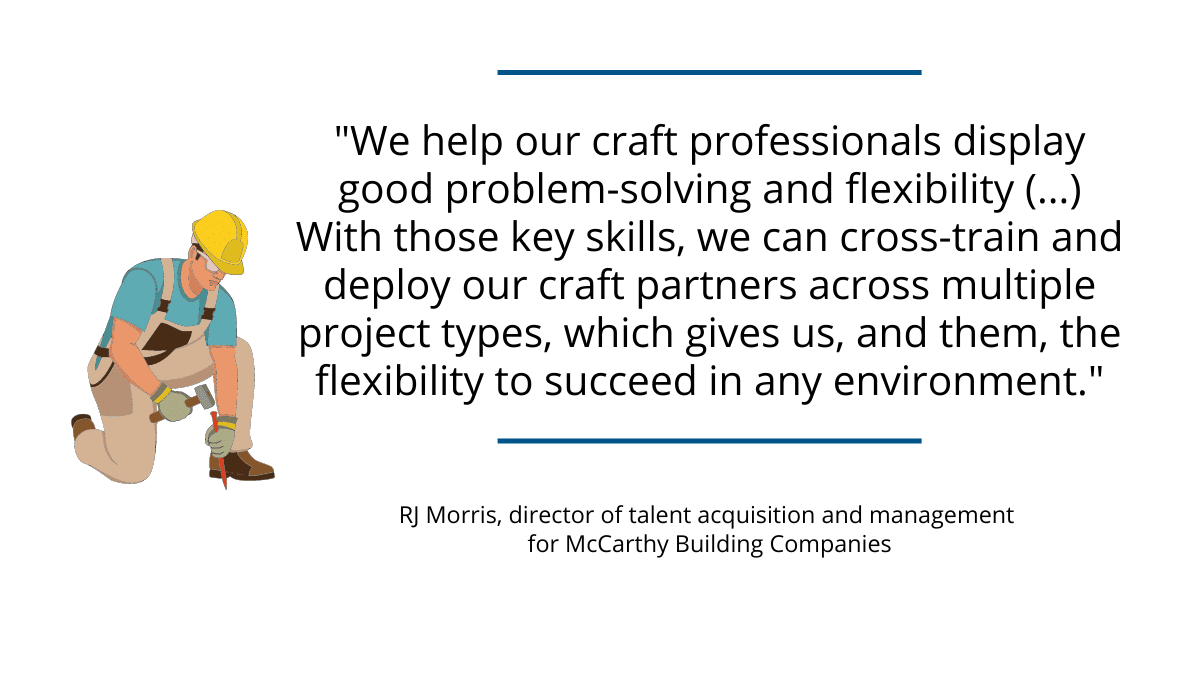
Furthermore, Morris points out that when you promote from within, especially when superintendents come from the field working at McCarthy construction sites, they’re often more experienced and understand the work.
Or in other words, newly promoted employees are more familiar with the company’s management and construction processes which means they can easily adapt to their new positions and succeed faster.
In the end, if you want to retain your employees, you need to invest in them. This means making your company a place where they can learn and progress in their field.
Include Employees In the Decision-Making Process
While some people thrive on being told what to do, most want to be included more deeply in the construction project.
What’s more, recent research has shown that workers who are not actively included in decision-making often experience high levels of stress.
This means a less motivated and less productive workforce for your business.

On the one hand, people who are included in the decision-making process and have a greater sense of responsibility also feel more valued.
This, in turn, ensures that they pay more attention to their work and the quality they produce.
In a nutshell, according to Gallup, engaged people are more invested in their work, more likely to stay with the current company, and produce higher-quality work.
Remember that leadership in construction is not just about managing people but also showing them you value their input and perspective so they can perform to the best of their abilities.
Use Technology That Helps Employees Work Smarter
Job dissatisfaction can stem from numerous sources.
One of the major ones has to do with broken processes and operational problems.
Or in other words, minor frustrations such as not being able to find a necessary tool or trying to reach an unavailable superintendent will accumulate and inevitably lead to stress and the decision to quit.
What’s more, construction workers can spend almost a third of their working week (or 14 hours per week) on non-productive activities such as looking for information, rework or conflict resolution.
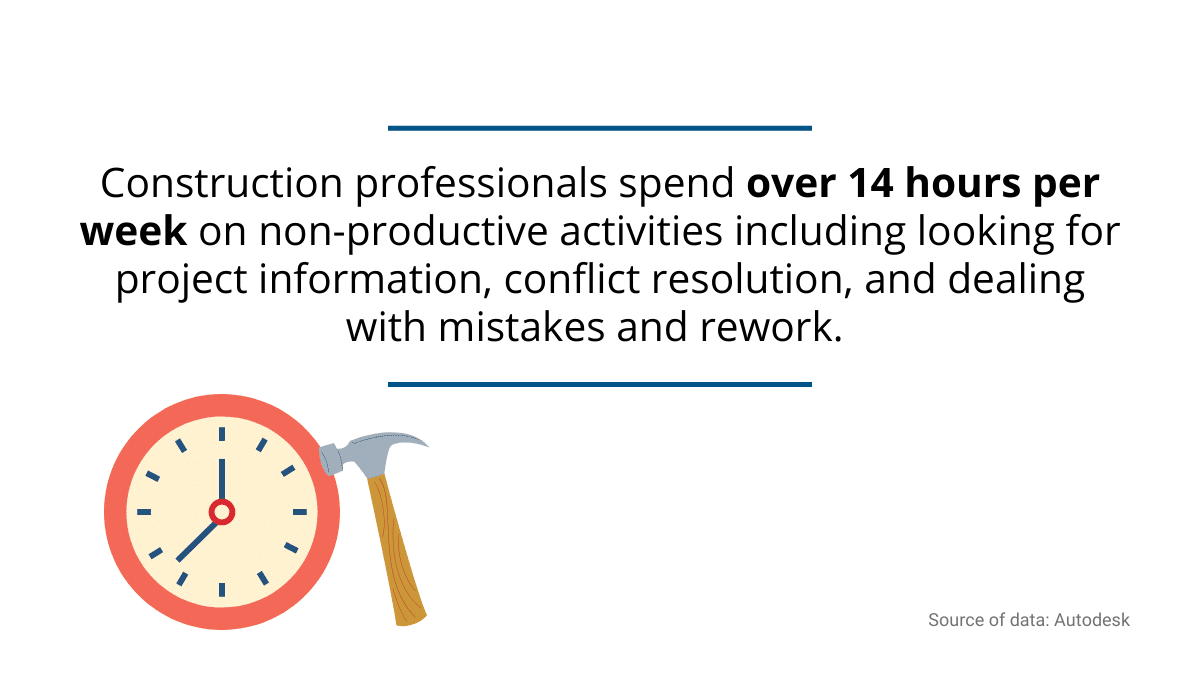
So, anything that will streamline operations, improve communication and enable quick access to information is a great way to make the workers’ jobs easier. But what can you do?
Recent research has shown that construction companies are making more commitments toward technology. Namely, construction software, automation, and artificial intelligence (AI).
The main premise is to enable workers to do more with less, thus improving their productivity and helping them finish tasks more efficiently.
For example, drones are widely used for site inspections and progress monitoring.
Then, designs and project plans are more accurate and detailed when made using advanced BIM software.
Even asset management is easier with cloud-based solutions.
Looking for missing tools can take up workers’ valuable time, but if they had a tracking solution like GoCodes Asset Tracking, they’d simply log into the app, check the location of the specific asset and find it in minutes.

They could even find a replacement tool if the one they’re looking for is scheduled for maintenance.
All of this information can be accessed immediately using the right digital solutions and technology.
But the best thing is that younger construction workers are excited to use advanced construction technology, thus making them more motivated to work and stay in the industry.
This is good news for construction companies that want to retain or hire new employees.
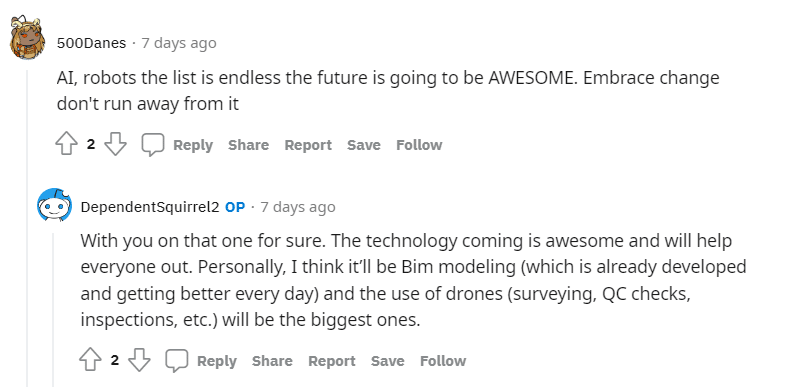
Keep in mind that everyone wants to do their jobs effortlessly, so a great solution to streamline operations and make construction tasks easier is by using technology.
Care More About Your Team’s Safety
People are aware that the construction industry is more physically demanding and dangerous than other industries. Yet, that doesn’t prevent them from taking up jobs in construction.
But a critical factor in their job search is finding companies that take necessary precautions to reduce risks and keep workers’ safety a top priority.
To illustrate this point better, companies with comprehensive safety programs are more trustworthy from the employee’s perspective.
If the worker believes the company has their back in the event they get ill or seriously injured; they are more likely to stay with the company.

In fact, recent studies revealed that 56% of high trust companies have lower than average employee turnover rates, which allows them to save as much as $750 000 every year.
Additionally, these companies were more successful in completing their projects on time.
So, how do you increase this sense of trust in your employees?
While implementing OSHA regulations is paramount, another thing you can do is offer a better health care plan and benefits.
Medical needs are a serious issue in countries like the US, and even the most loyal worker will choose a company that will better cover their ongoing medical costs.
Some additional medical coverage options can be:
- Life and Accidental Death & Dismemberment (AD&D)
- Short-term Disability
- Long-term Disability
- Accident Insurance
- Critical Illness Insurance
Now, an often overlooked aspect of safety programs is mental health. But just like you’d want to protect your workers from physical injuries, you have to consider their mental well-being.
In the UK alone, construction workers are three times more likely to die of suicide than the average person.
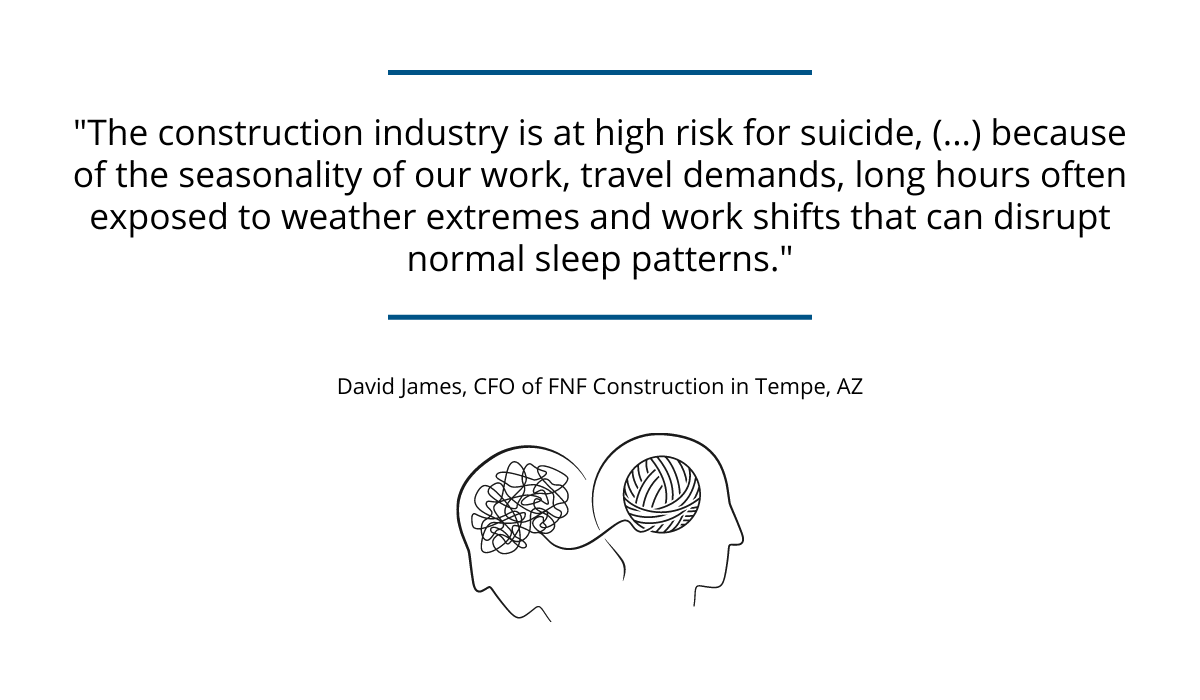
This is why Russell Stilwell, Founder and Managing Director of RSE Building Services, implemented mental health and well-being practices into his safety program after his first-hand experience with bad mental health.
For example, regular informal consultations, hiring educated staff to support struggling workers, biannual review of mental health procedures, and internal communication about achievements and awards.
These practices positively impacted Stilwell’s business because, in a three-year period, there was a reduction in stress-related absences and an increase in staff retention rates.
What you can learn from this is that caring about workers’ safety should not be an afterthought but an integral part of your business plans and retention efforts.
Remove the Language Barriers
While English is the most widely used language in business, construction companies should not assume that their employees are proficient enough to communicate on construction sites.
Moreover, with labor shortages worldwide, there’s been an influx of foreign workers in many countries.

In Malaysia, there’s been an increase in construction workers coming from Nepal, India, Vietnam, and Bangladesh, while in the UK, new construction workers tend to come from Eastern Europe, namely Romania.
Even though they are located on different sides of the world, their problems are similar. One of the most important is the language barrier.
A lot of the time, foreign workers don’t understand what their supervisors are saying, leading to delays and an inability to understand safety measures.
Because of this, foreign workers are more likely to experience fatal injuries or die on the worksite.
Miscommunication can happen even with people with the same level of language proficiency, but those risks increase with a multilingual workforce.
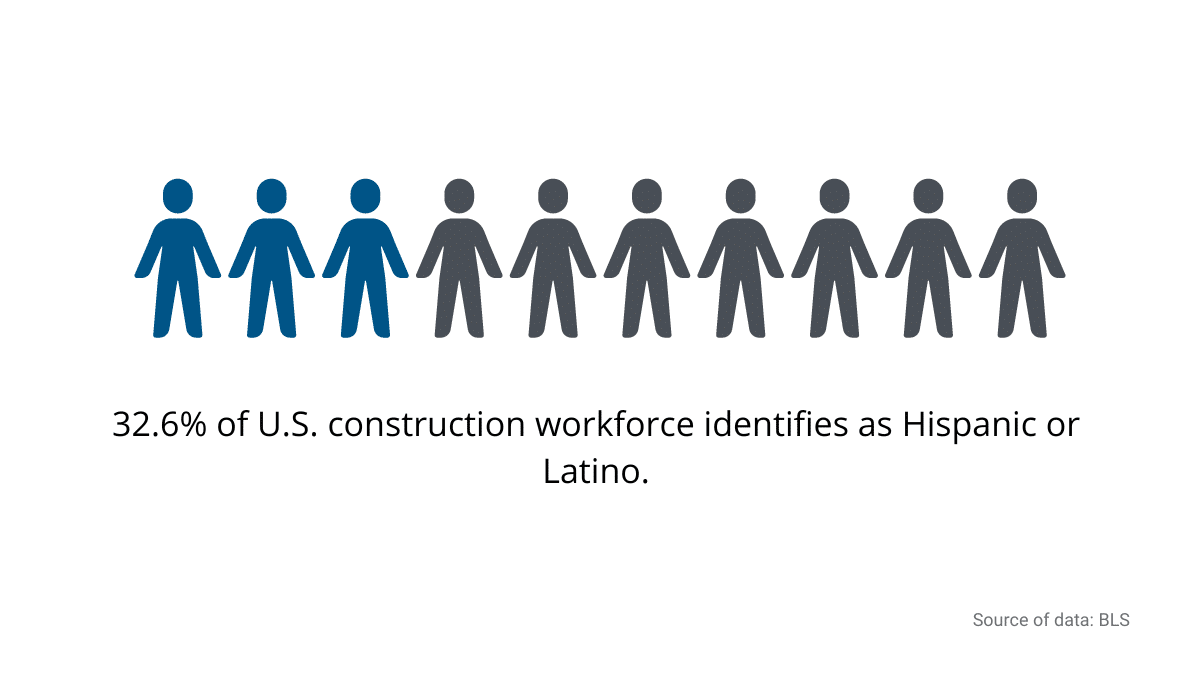
In the US alone, almost 32% of the construction workforce identifies as Hispanic and Latino.
Now, this doesn’t mean that their English abilities are lacking, but having a bilingual management system can help mitigate most communication problems.
This is why the previously mentioned construction company, McCarthy, is committed to improving communication within their workforce.
For instance, they realized that a significant percentage of their workforce is Spanish-speaking, so they made an effort to hire bilingual training staff to introduce new workers into the company.
Their belief is that if employees don’t understand what you’re saying or what they’re meant to do, they won’t be confident in their job, and construction projects will suffer.

Moreover, some surveys revealed that language barriers prevented companies from pursuing business opportunities and negatively impacted the company’s bottom line.
Obviously, you can use tools like Google translate to break language barriers in the short term, but investing in language courses for management and field workers or hiring multilingual staff is ultimately one of the best solutions.
All in all, if language barriers are a severe problem in your company, it is in your best interest to help your workers overcome that obstacle and integrate into your company seamlessly.
Conclusion
Unfortunately, worker turnover is a reality in every industry.
But with the right tools and strategies, you could increase your retention rates and create a company any employee will be happy to work for long-term.
Satisfying your workers’ needs, taking care of their safety, and including them in key decision-making are just some ways to retain workers in a competitive market.
So start implementing some of our tips today to create a happy workforce and secure a better future for your business.





